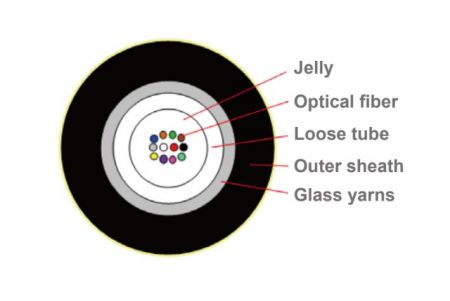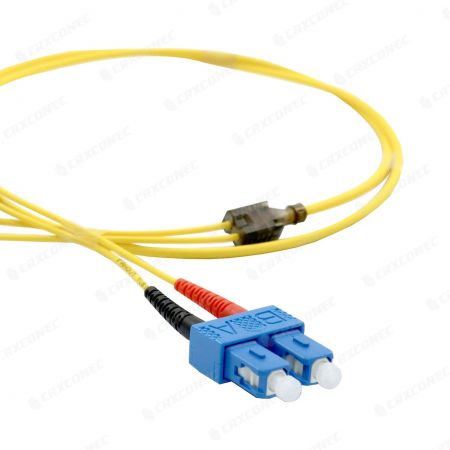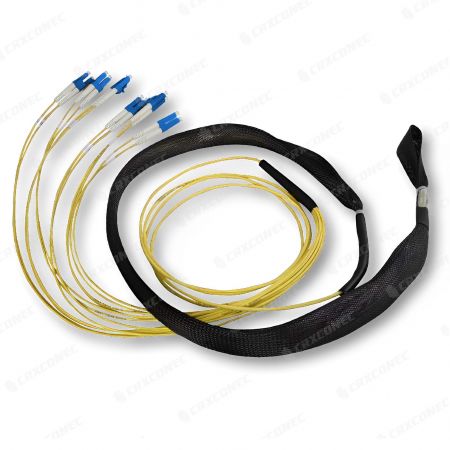Singlemode vs Multimode Fiber Cable: Understanding the Differences.
Are you considering purchasing singlemode fiber cable or multimode fiber cable for your networking needs? Delve into the specifics of Single mode and Multimode fiber optic cables to make an informed decision for your LAN or data center. In today's fast-paced digital world, Single mode and Multimode fiber optic cables are essential components of modern networking infrastructure. Understanding the differences between these two types of cables is crucial to selecting the right one for your specific requirements.
Key Differences between Singlemode and Multimode Fiber Cable
- Core Diameter: Singlemode fiber has a smaller core diameter (around 9 microns), while multimode fiber has a larger core diameter (ranging from 50 to 62.5 microns).
- Transmission Distance: Singlemode fiber can transmit signals over longer distances with minimal signal loss, making it suitable for long-haul applications. Multimode fiber is more suitable for shorter distances within a 3. few hundred meters.
- Bandwidth and Data Rates: Singlemode fiber offers higher bandwidth and supports faster data transmission rates compared to multimode fiber.
- Light Source: Singlemode fiber uses a laser diode, while multimode fiber utilizes LEDs or lasers as light sources.
- Cost: Multimode fiber cables are generally more cost-effective than singlemode fiber cables.
- Applications: Singlemode fiber is ideal for LANs, data centers, and telecommunications networks requiring long-distance transmission, while multimode fiber is suitable for high-speed data transfers within localized networks.
Read more detailed information in the content below.
What is Singlemode Fiber Cable?
Singlemode fiber cable, as the name suggests, allows only a single mode of light to propagate through the core. It has a smaller core diameter, typically around 9 microns. This type of fiber cable is designed to carry signals over long distances with minimal signal loss and distortion. Singlemode fiber cables achieve this by using a laser diode as the light source, which emits a narrow beam of light that stays focused throughout the length of the cable.The narrow core size of singlemode fiber enables it to support higher bandwidth and data transmission rates. It offers excellent performance in terms of speed, reach, and reliability, making it ideal for long-haul applications, such as telecommunication networks, internet backbones, and inter-building connections. Singlemode fiber is also suitable for carrying data across vast distances, including undersea communication links.
SM Fiber, a higher transmission rate and longer distance.
Single Mode cable is a single strand of glass fiber with a diameter of 8.3 to 10 microns that has one mode propagate typically 1310nm or 1550nm transmission. Carries higher bandwidth than multimode fiber, but requires a light source with a narrow spectral width. Single-mode fiber gives you a higher transmission rate and up to 50 times more distance than multimode, but it also costs more. Single-mode fiber has a much smaller core than multimode. The small core and single light-wave virtually eliminate any distortion that could result from overlapping light pulses, providing the least signal attenuation and the highest transmission speeds of any fiber cable type. Single-mode fiber has a small light carrying core in diameter. It is normally used for long-distance transmissions with laser diode based fiber optic transmission equipment.
What is Multimode Fiber Cable?
On the other hand, multimode fiber cable is designed to carry multiple modes of light simultaneously through the larger core diameter, typically ranging from 50 to 62.5 microns. This type of fiber cable utilizes an LED (Light Emitting Diode) or a laser as the light source. Due to the larger core size, multimode fiber is capable of carrying more data but over shorter distances compared to singlemode fiber. Multimode fiber cables are commonly used in local area networks (LANs), data centers, and short-distance applications where the transmission distance is within a few hundred meters. They are cost-effective and provide sufficient performance for high-speed data transfers in these scenarios. However, due to the dispersion caused by the multiple modes of light traveling through the core, multimode fiber has a lower bandwidth and limited reach compared to singlemode fiber.
MM Fiber, high bandwidth at high speeds over medium distances.
Multimode cable is made of glass fibers, with the most common diameters is 50/125 micron for the light carry component. Multimode fiber gives you high bandwidth at high speeds over medium distances. Light waves are dispersed into numerous paths. However, in long cable runs, multiple paths of light can cause signal distortion at the receiving end, resulting in an unclear and incomplete data transmission. If the distance is less than a couple of miles, multimode fiber will work well. If the distance to be covered is more than 3-5 miles, single-mode fiber is the choice. Multimode fiber has a relatively large light carrying core. It is usually used for short-distance transmissions with LED-based fiber optic equipment.
Choosing The Right Fiber Cable For Your LAN Or Data Center
When deciding between singlemode and multimode fiber cables, it is important to consider your specific networking requirements. If you need to transmit data over long distances or require higher bandwidth and faster data rates, singlemode fiber is the ideal choice. On the other hand, if your application involves shorter distances and cost-effectiveness is a priority, multimode fiber would be more suitable. It is worth noting that advancements in technology have made singlemode fiber more affordable and easier to deploy, even for shorter-distance applications. Therefore, it is always a good idea to consult with a fiber optic expert to evaluate your requirements and determine the most appropriate fiber cable solution for your needs.
Conclusion
Singlemode and Multimode fiber optic cables offer distinct advantages based on core diameter, transmission distance, bandwidth, and cost. Whether you require long-distance transmission capabilities or high-speed data transfers within localized networks, CRXCONEC provides comprehensive fiber patch cord solutions tailored to meet your LAN or data center requirements. Explore CRXCONEC's complete range of Single mode and Multimode fiber cables today to enhance your networking infrastructure!
- Related VideoRelated ProductsFiles







